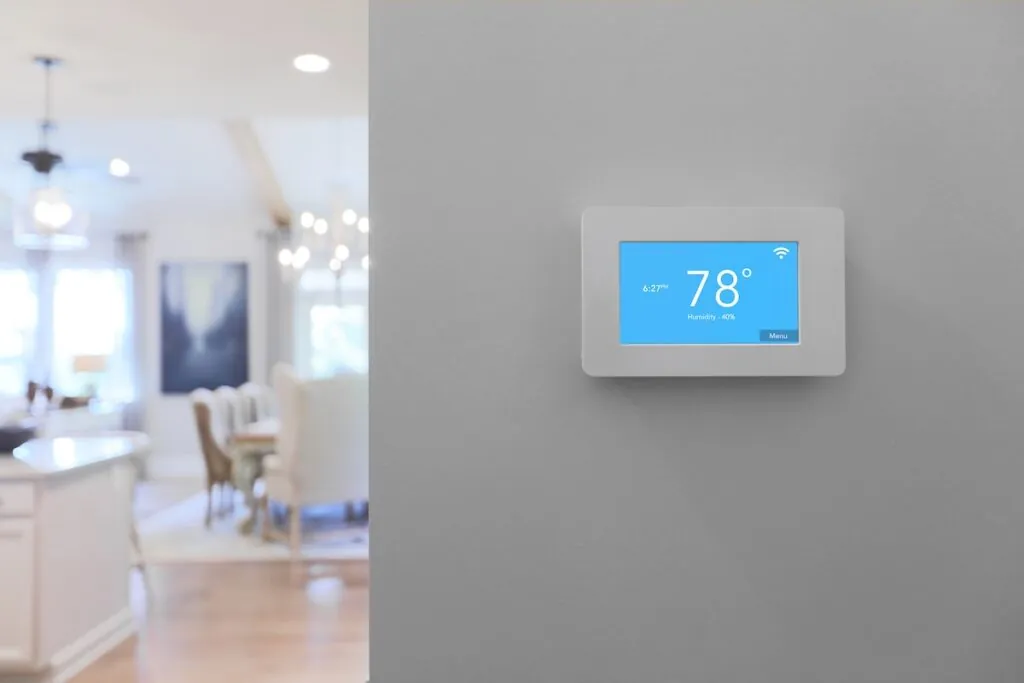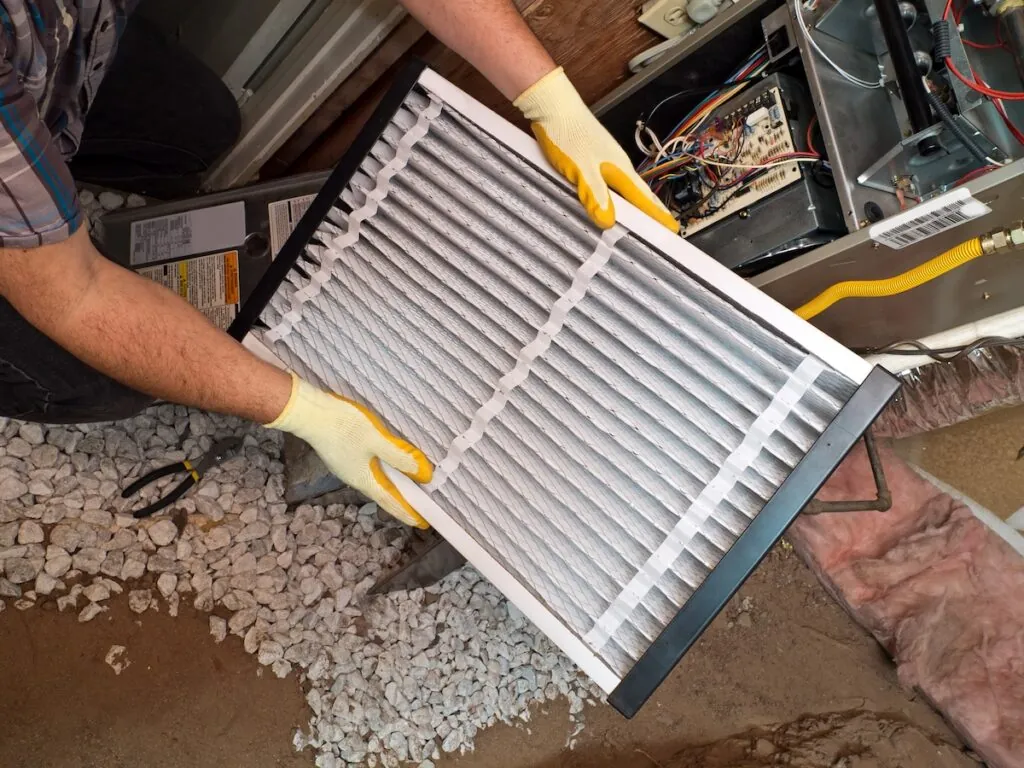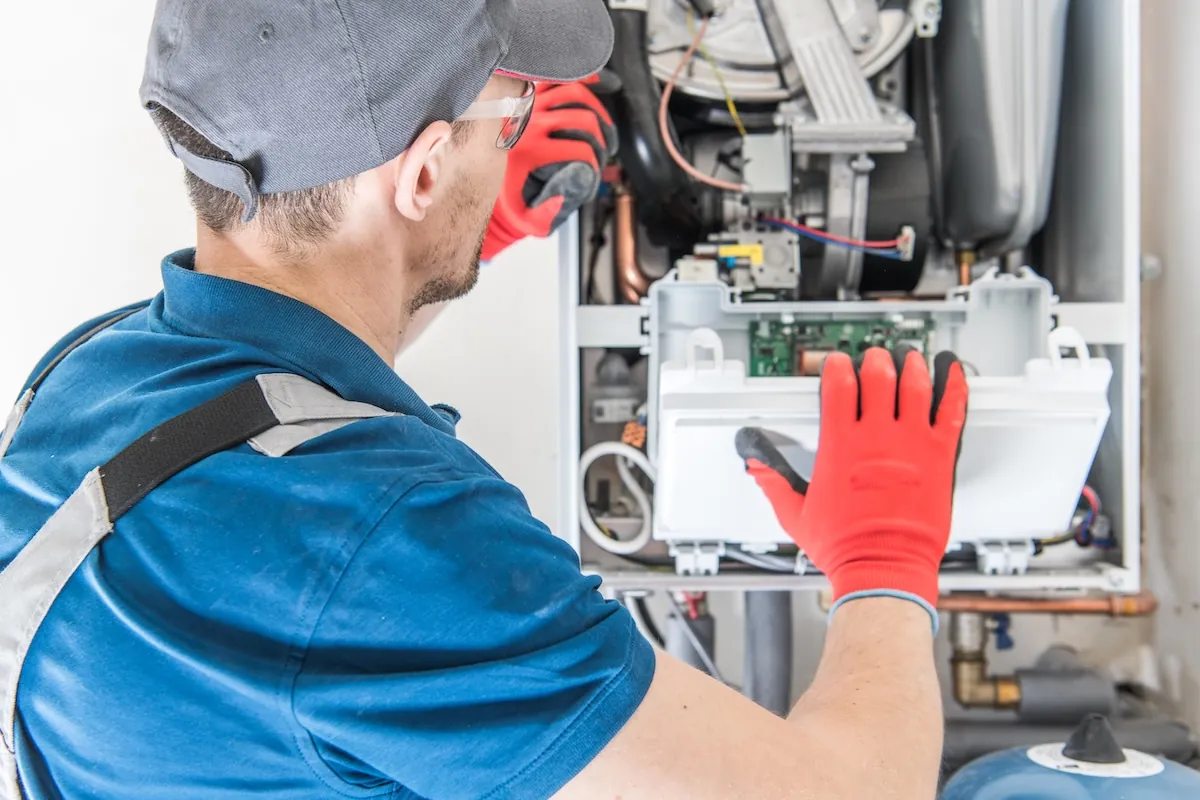If you’ve ever dealt with your furnace not blowing hot air on a chilly Minnesota day, you know how stressful and uncomfortable it can be. A furnace that runs but only produces cool or lukewarm air is a common issue for homeowners, but it usually points to a fixable problem.
In this guide, we’ll cover the most likely causes, simple troubleshooting steps you can try on your own, and when it’s time to call in the experts at Genz-Ryan.
- Lack of hot air can be caused by anything from thermostat settings to dirty filters or more serious part failures.
- Some furnace issues have simple DIY fixes—others require a professional.
- Addressing the issue early can prevent larger breakdowns and restore home comfort fast.
🤔 First Things First: What Type of Heating System Do You Have?
Before you start troubleshooting, it helps to know what kind of system you’re working with. Most Minnesota homes use a forced-air gas furnace, but some may rely on electric furnaces, heat pumps, or hybrid systems.
For this blog, we’ll focus mainly on gas furnaces, which are the most common. However, many of the tips apply across other types of systems too.

1. Check the Thermostat Settings
It may sound obvious, but incorrect thermostat settings are a common reason your furnace isn’t blowing hot air.
- Is it set to “Heat”? Make sure your system isn’t still on “Cool” or just set to “Fan.”
- Is the temperature high enough? Bump the setting up a few degrees above room temp to see if the furnace kicks on.
- Try replacing the batteries: Low battery power can cause your thermostat to malfunction or send mixed signals to your furnace.
If your thermostat is programmable or smart, check that schedules or app settings aren’t overriding your desired temperature.
2. Inspect the Furnace Filter
A dirty or clogged air filter can block airflow, causing the furnace to overheat and shut off the burners as a safety precaution. When this happens, the blower may still run, but no warm air will come out.
- Solution: Check the filter and replace it if it looks dirty or hasn’t been changed in the last 1–3 months.
- Tip: Hold the filter up to a light—if you can’t see light through it, it’s time to replace it.
Keeping your furnace filter clean improves efficiency, protects internal parts, and ensures warm air can circulate properly.

3. Check the Furnace’s Pilot Light or Ignition
If you have an older furnace with a standing pilot light, make sure it’s still lit. Newer systems use electronic ignition, which can sometimes fail or misfire.
Possible Issues
- Pilot light is out: This prevents the burners from igniting.
- Dirty flame sensor: A dirty or corroded flame sensor can cause the system to shut off gas flow.
- Igniter failure: A cracked or faulty igniter won’t spark or glow as it should.
What to Do
- If you’re comfortable doing so, follow the instructions on your furnace label to relight the pilot.
- If the pilot keeps going out or the igniter isn’t glowing, call a professional technician to inspect and replace faulty parts.
4. Check for Overheating or Safety Shutdowns
Modern furnaces have built-in safety switches that will shut down the burners if the unit overheats, loses airflow, or detects a malfunction. When this happens, the blower fan might continue running without producing heat.
Common Triggers
- Overheating due to poor airflow (clogged filter or blocked vents)
- Faulty high-limit switch
- Burner issues or cracked heat exchanger
These problems aren’t always DIY fixes. If you’ve replaced the filter and still aren’t getting hot air, it’s best to call a licensed technician to avoid further damage or safety risks.
5. Check Your Ductwork and Vents
If the furnace is running and producing warm air but some rooms feel cold, you may be dealing with a duct or airflow problem.
- Blocked or closed vents: Make sure all supply vents are fully open and unobstructed by furniture or rugs.
- Leaky ductwork: In older homes, ducts can develop leaks that let warm air escape before it reaches your living spaces.
- Disconnected or crushed ducts: Especially in attics or basements, look for damaged or disconnected sections.
If airflow is weak or uneven, a professional inspection can help identify leaks and restore proper distribution.
6. Your Furnace Might Be in “Cool-Down” Mode
Sometimes, your furnace may blow cool air just before or after a heating cycle. This is completely normal.
- Start of cycle: The blower fan may turn on a few seconds before the burners ignite.
- End of cycle: After the burners shut off, the fan may continue running briefly to push out any remaining warm air.
If this is the only time you notice cold air, there’s likely nothing to worry about. If cold air continues beyond a minute or two, keep troubleshooting.
7. Furnace Not Blowing Hot Air Due to Part Failure
In some cases, a mechanical or electrical failure inside the system is to blame. These problems typically require diagnosis by an HVAC professional.
Possible Failures
- Blower motor: If this part fails or runs at the wrong speed, warm air may not move through your ducts properly.
- Control board: This component manages all furnace operations. If it malfunctions, the burners or blower may not respond correctly.
- Gas valve or pressure switch: These safety components can fail or trip, cutting off the fuel supply to the burners.
Don’t try to repair or replace these parts on your own. Furnace repairs involve gas and electrical components that should always be handled by certified professionals.
8. Check the Furnace Power Source and Gas Supply
If the furnace isn’t blowing any air, hot or cold, check to make sure it has power and a gas supply.
- Check the breaker panel: A tripped breaker could disable your system.
- Inspect the shutoff switch: Look for a light switch near the furnace. It should be in the “on” position.
- Gas valve position: The gas valve (usually located near the furnace or gas meter) should be parallel to the pipe to indicate it’s open.
If you smell gas or suspect a leak, leave the house immediately and call your gas company.

✅ Prevent This Problem in the Future
A furnace not blowing hot air can often be avoided with regular maintenance and system care. Here’s how to keep your system running reliably:
- Replace filters regularly: Every 1–3 months depending on your home and usage.
- Schedule annual tune-ups: Preventative maintenance can catch small issues before they become major problems.
- Keep vents clear: Avoid blocking supply and return vents with furniture or rugs.
- Watch for warning signs: If your furnace starts blowing cool air occasionally or makes strange noises, don’t ignore it.
⭐️ Why Choose Genz-Ryan for Furnace Repair?
When your furnace stops blowing hot air, you need fast, reliable service—and a team you can trust. That’s where Genz-Ryan comes in.
- 70+ years of experience: We’ve been keeping Minnesota homes warm since 1950.
- Licensed HVAC technicians: Our pros can quickly diagnose and fix any furnace issue.
- Upfront pricing: No surprise fees, just honest recommendations and quality work.
- Emergency service available: When it’s cold outside, we move fast to restore your comfort.
- Comprehensive care: From tune-ups to full system replacements, we’ve got you covered.
💪 Restore the Heat With Help From Genz-Ryan
A furnace not blowing hot air doesn’t always mean a major breakdown—but it does mean something isn’t working as it should. Whether it’s a thermostat setting, dirty filter, or more serious issue, Genz-Ryan can help you get to the bottom of it.
If your furnace is blowing cold air, don’t wait. Contact Genz-Ryan today for a fast diagnosis, expert repair, and a free quote. We’ll get the heat flowing again—safely, efficiently, and exactly when you need it.








